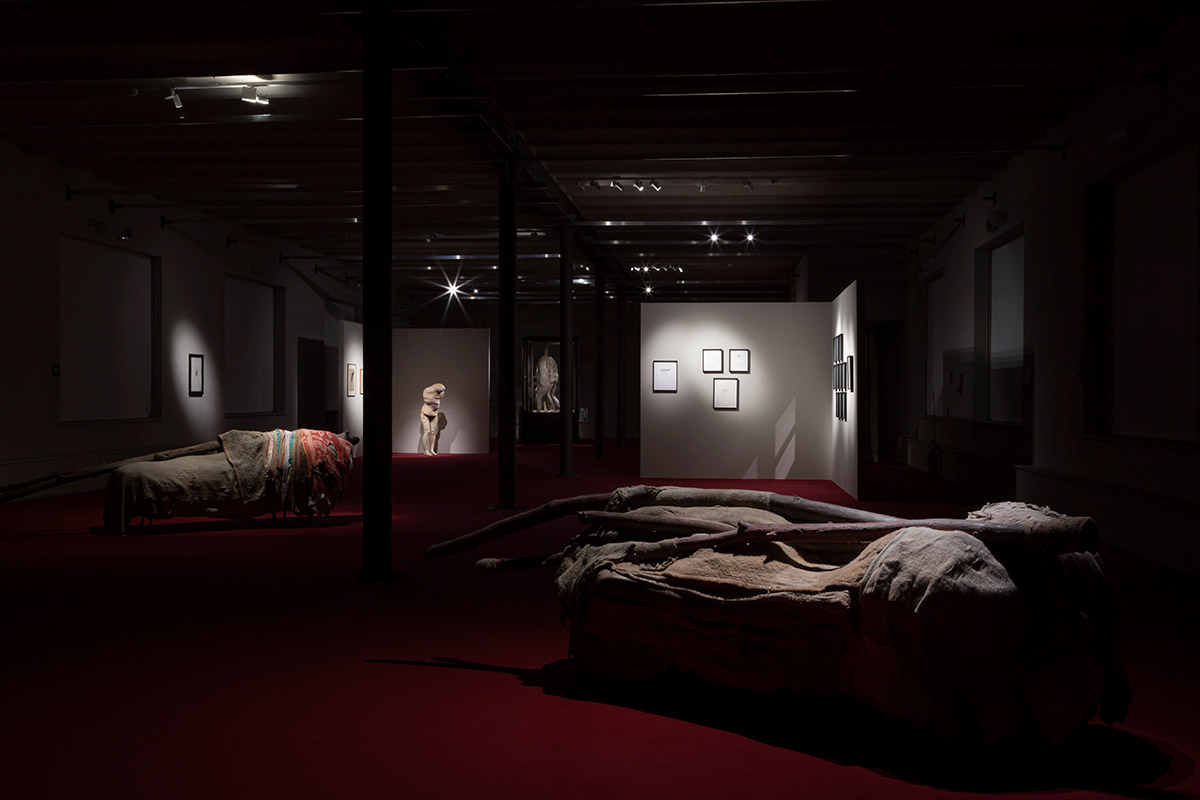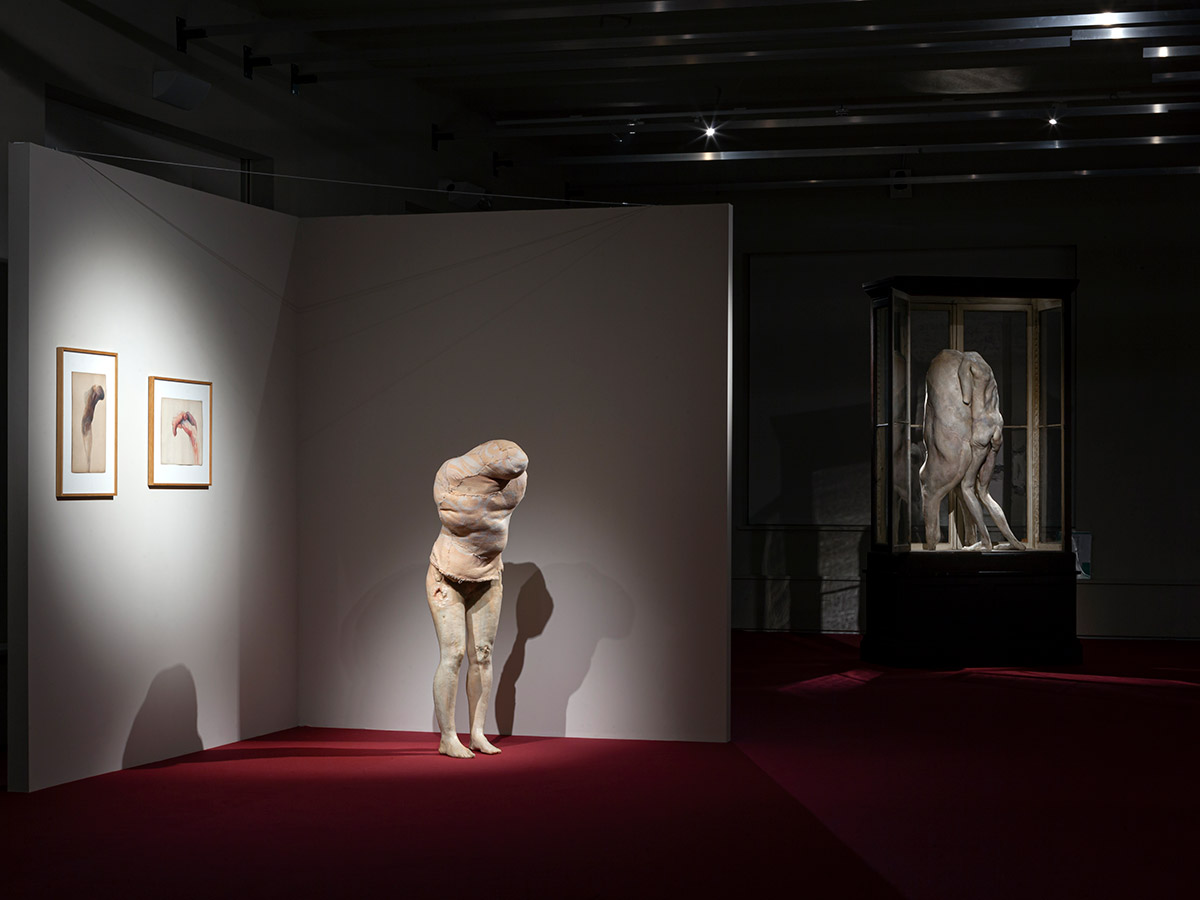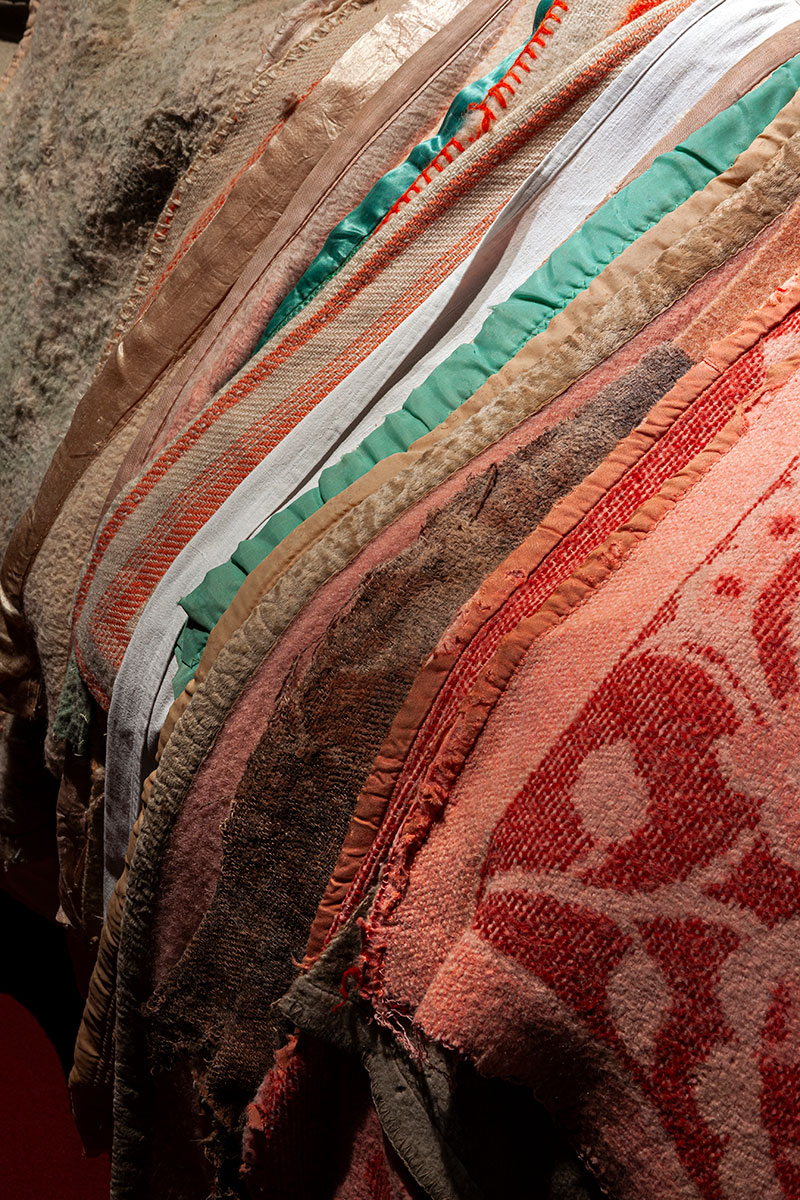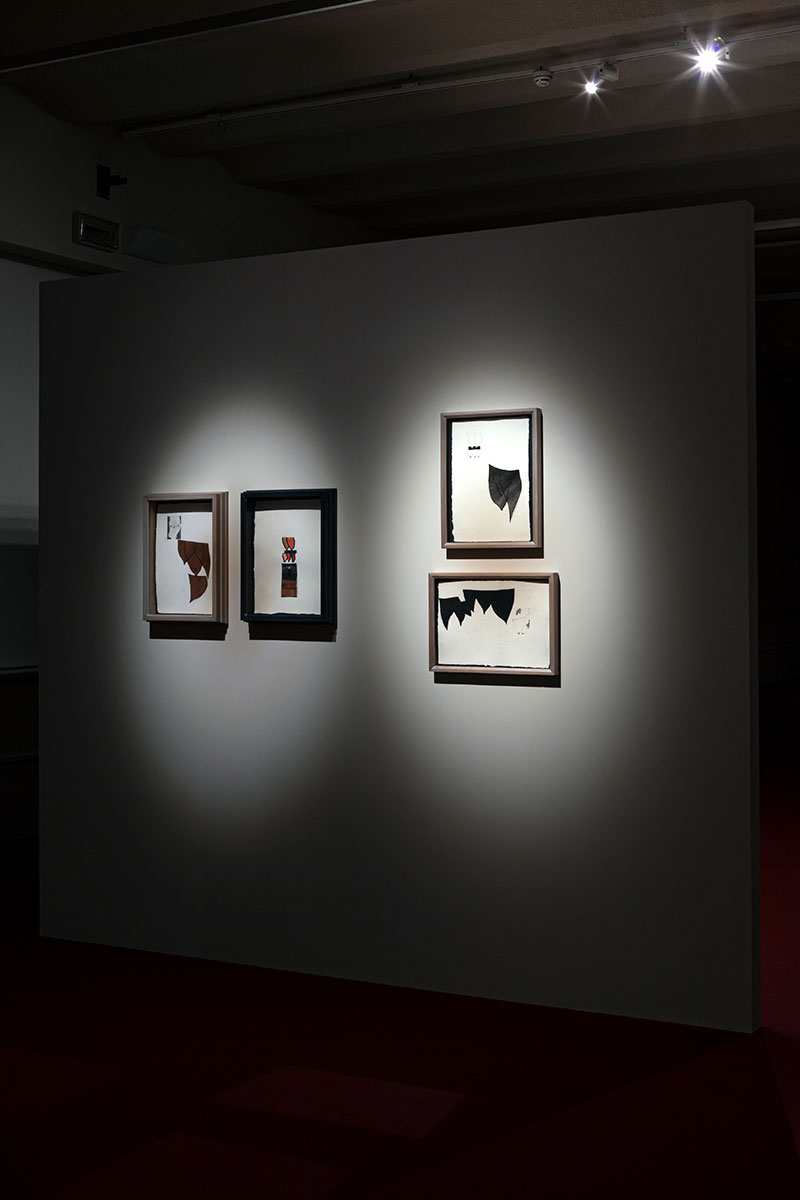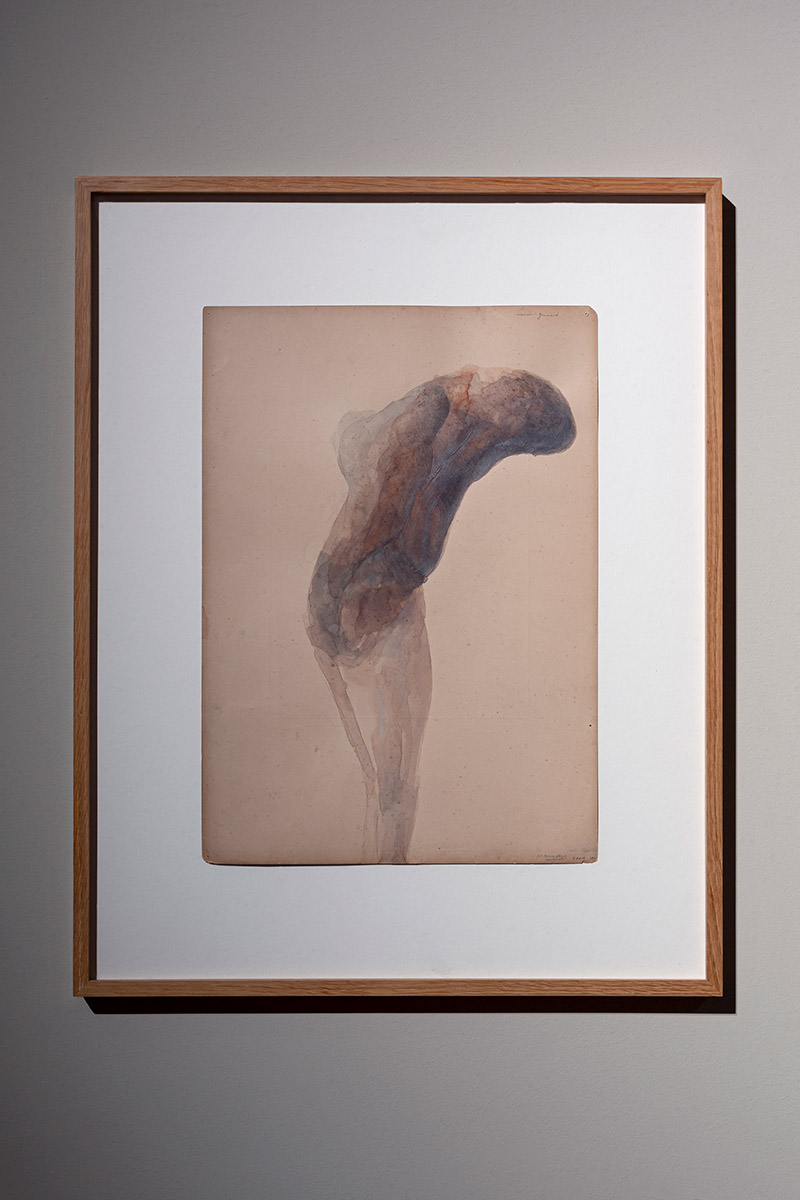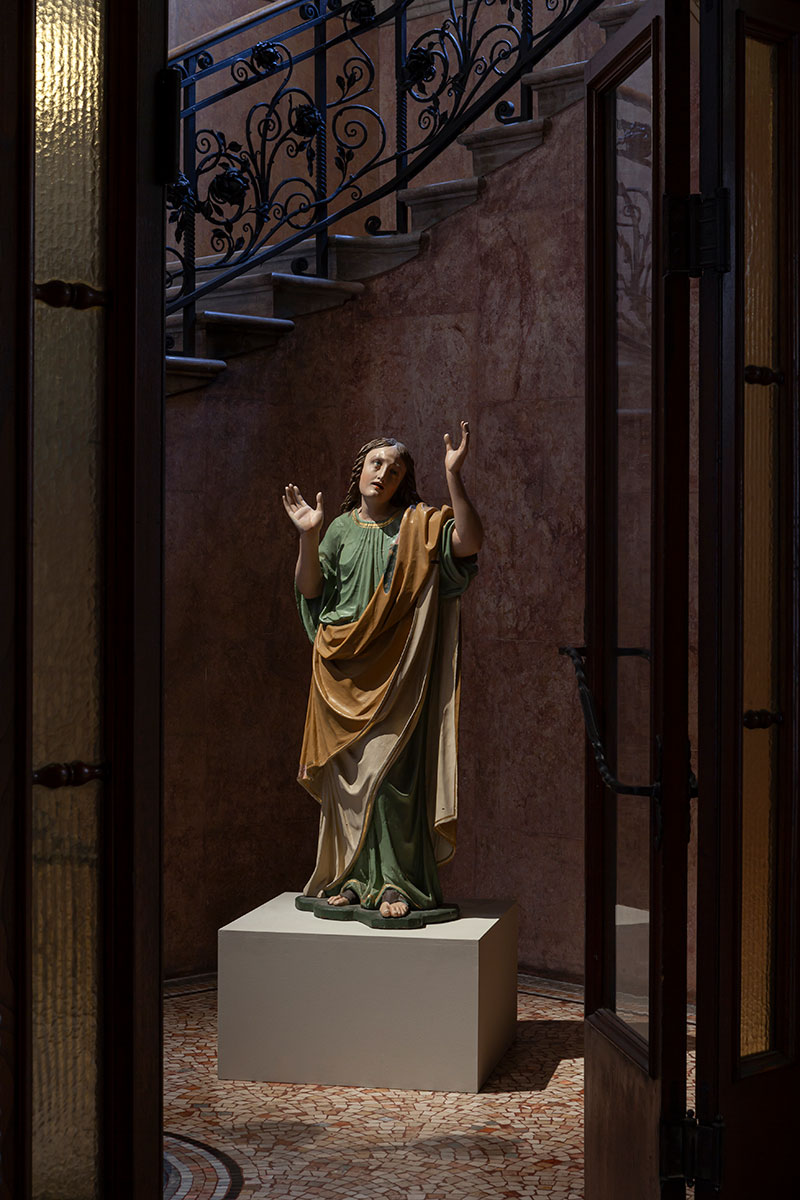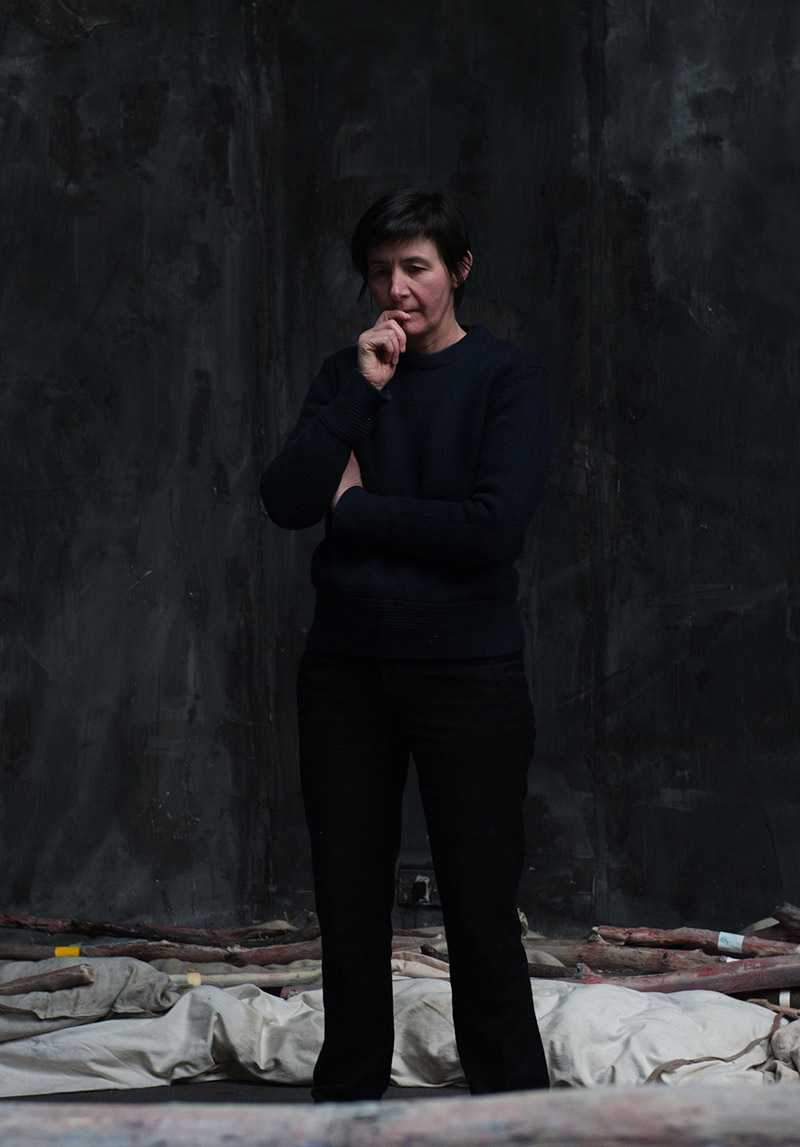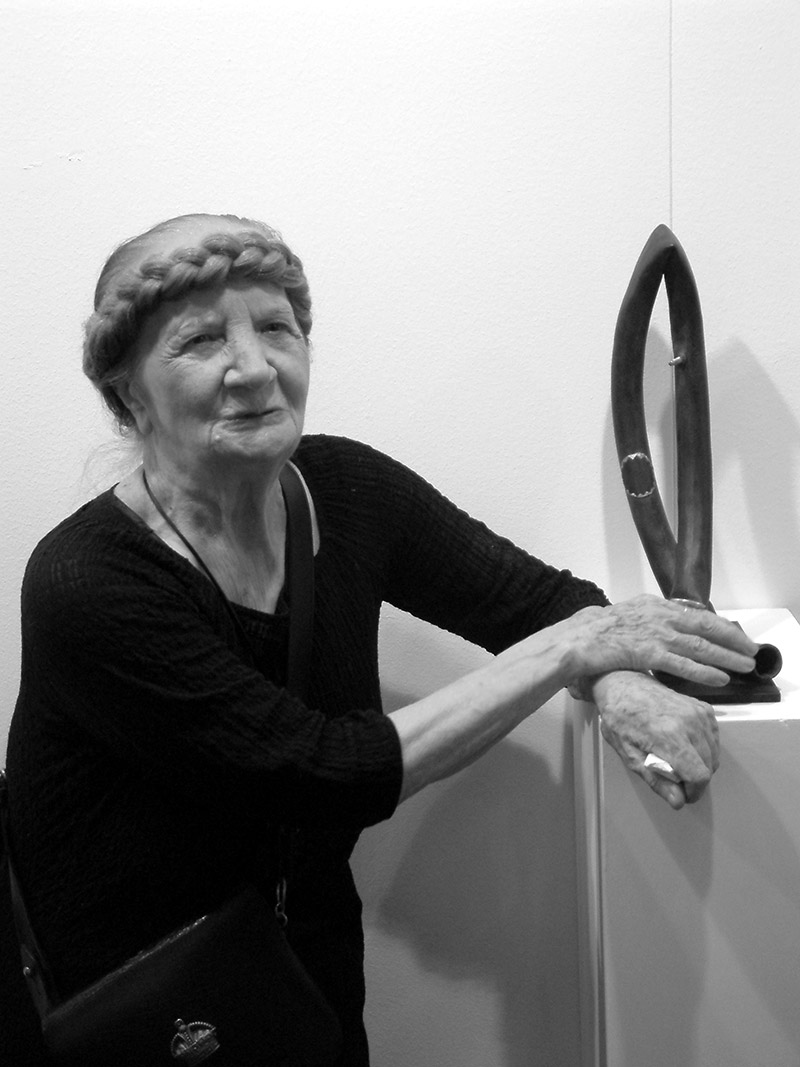Sul Guardare. Atto 2 – Berlinde de Bruyckere, Carol Rama, Giovanni Angelo Del Maino
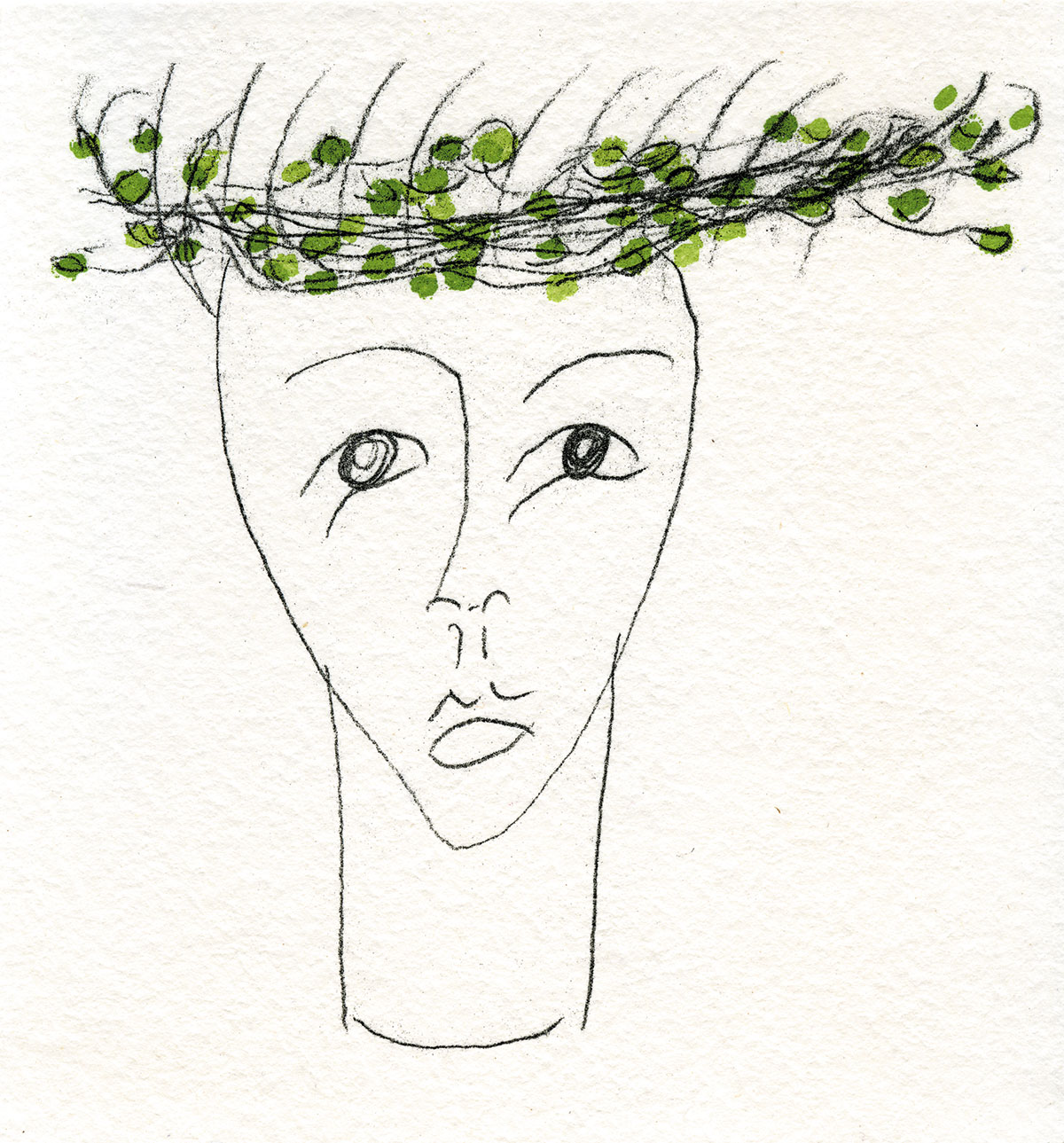
Carol Rama, Dorina, 2000, aquatint. Private collection. © Carol Rama Archive, Turin
DATE:
March 2 – June 30, 2024
INFO:
Friday-Sunday:
10.30am-7.30pm
Upon reservation for
schools and groups
Free entry
DOWNLOAD:
SHARE:
Curated by Paola Nicolin
In collaboration with Alexandra Wetzel
The second instalment of a series of exhibitions highlighting lesser-known pieces from Piacenza’s museum collections engages contemporary artists Berlinde de Bruyckere and Carol Rama in a dialogue with Renaissance sculptor Giovanni Angelo Del Maino, exploring the theme of resilience and beauty.
XNL Piacenza, the hub for contemporary art, cinema, theatre, and music by the Fondazione di Piacenza e Vigevano, is delighted to unveil Sul Guardare Atto 2 (Ways of Seeing Act 2) – Berlinde de Bruyckere, Giovanni Angelo Del Maino, Carol Rama, the second instalment in the exhibition series Sul Guardare (Ways of Seeing). This project is dedicated to reinterpreting the rich artistic heritage of the city and its surroundings, bridging tradition and innovation, and fostering a dialogue with contemporary artists through temporary exhibitions and permanent collections.
Loosely inspired by the television series of the same name created by John Berger in 1971 for the BBC, the project commenced in September 2023 with an exhibition featuring Massimo Grimaldi in dialogue with the Ricci Oddi Modern Art Gallery and it continues its mission to cast a new light on lesser-known works from city repositories and collections by connecting them with contemporary themes and topics.
For its second act, the exhibition collaborates with the Office for Ecclesiastical Cultural Heritage of the Diocese of Piacenza-Bobbio and the Conservation and Restoration Centre of La Venaria Reale. Through the works of three artists, it provides a glimpse into the evolution and continuity of artistic expression over a long span of time.
XNL Piacenza presents an unprecedented dialogue between two sophisticated and incisive 20th-century artists, Berlinde de Bruyckere and Carol Rama, centred around an important work from the Diocese collections entitled Dolente (Figure of sorrow), recently attributed to Renaissance sculptor Giovanni Angelo Del Maino.
Renowned for his expertise in wooden sculpture within the Duchy of Milan, Giovanni Angelo Del Maino was an influential figure in Piacenza from the early decades of the 16th century. Alongside his brother Tiburzio, he left behind a wealth of artistic legacies in the city, which conferred honorary citizenship upon him in 1529, recognizing his talent and stature.
Dolente, a wooden sculpture housed in the church of St. Eufemia in Piacenza and crafted in the early decades of the 16th century, reflects the artist’s contemporary sensibility, and lends itself to reinterpretation within a modern context. This artwork serves as a conduit for discussions on themes such as time, evolving sensibilities, resilience, beauty, and the pursuit of authenticity, particularly when it interacts with the research and creations of two contemporary artists.
For this event, Del Maino’s artwork underwent a restoration study conducted by the Conservation and Restoration Centre of La Venaria Reale, at its first collaboration with an institution in Piacenza. The Centre meticulously examined the essence of the artwork, aiming to revive its authentic appearance obscured by the patina of time which, akin to sculpting, wears out and model things. As a result of this process, the community of Piacenza is offered a narrative of the artwork through study and rediscovery of its authenticity.
Simultaneously, Dolente serves as a catalyst for contemplating resilience amidst pain and the delicate balance between vulnerability and strength. The sculpture engages in a dialogue with the works of two artists who anticipated the inquiries and sensibilities of following generations (Carol Rama, Turin 1913 – 2015) and delved into the relationship between brutality and dignity, abstraction and physicality, harmony and deformity, solitude, and intimacy, juxtaposed with the public dimension of sculpture, more than ever a testament to resilience amid adversity (Berlinde de Bruyckere, Gent 1964). The interplay among the wooden sculpture, Berlinde de Bruyckere’s sculptures, and Carol Rama’s engravings and graphic works provides an opportunity to engage with contemporary themes, such as the representation of pain and how it can be transformed or liberated in the process of creating beauty.
In the case of Carol Rama, the selection of artworks from private collections, highlight the artist’s use of engraving across various mediums, including drawing, painting, collage, and more.
In the exhibition guide, Alexandra Wetzel, who curated the selection, writes: “Carol Rama was not an engraver. Her focus was on the surface before her, awaiting her creative touch. The plate would be transformed into a black canvas when coated with smoked wax, or into a gleaming metal sheet when ink mixed with sugar was applied for aquatint. Using either a point or a brush, she worked with complete freedom. The technical intricacies such as biting, aquatints, and printing were expertly handled by Franco Masoero, her printer and collaborator. The artist experienced a profound mixture of joy and astonishment upon finally beholding the proof prints. Often overwhelmed, she frequently reached for watercolours or nail varnishes to directly enhance the printed sheet.”
The graphic works unveil a nuanced yet strong aspect of Rama’s artistic expression: flowers, hands, fists, Fates, and faces emerge from the shadows of the gallery, carrying significant resonance, despite being somewhat side-lined.
Conversely, Berlinde de Bruyckere’s sculptures and drawings delve into intimate and domestic realms, despite their monumental scale. Beds adorned with layers of blankets and figures undergoing metamorphosis between human and natural forms punctuate the ground floor gallery space, evoking themes of protection and confinement, collective memory and intimacy, beauty, and anguish.
The Belgian artist, who will be featured in a solo exhibition at the Abbey of St. Giorgio Maggiore in Venice for the upcoming Art Biennale and previously represented the Belgian Pavilion in the 2013 edition, has developed a distinctive sculptural language over the years and has crafted her personal vocabulary working with materials such as wax moulds, animal skins, hair, fabrics, metal, and wood. The theme of the metamorphosis of living beings serves as a key to understanding her work, where the distortion of organic forms often reaches lyrical heights.
Deeply influenced by Flemish Renaissance traditions, De Bruyckere frequently draws inspiration from the works Old European masters, Christian iconography, mythology, and cultural traditions.
In this context, the dialogue with the hidden history of Giovanni Del Maino gains strength through the resonance of De Bruyckere’s oeuvre. Throughout her career, she has explored the universal dimension of the theme of duality (love and suffering, danger and protection, life, and death).
The exhibition is complemented by a public program featuring lectures, workshops, and guided tours.
The events are conducted in collaboration with the Head Office for Ecclesiastical Cultural Heritage of the Diocese of Piacenza-Bobbio.
XNL Arte programme is supported by Rete Cultura Piacenza, which includes the Fondazione of Piacenza and Vigevano, the Municipality of Piacenza, the Province of Piacenza, the Emilia-Romagna Region, the Chamber of Commerce of Emilia, and the Diocese of Piacenza-Bobbio.
Berlinde De Bruyckere
Berlinde De Bruyckere was born in Ghent, Belgium in 1964, where she currently lives and works.
Berlinde De Bruyckere’s work deals with the transformation, transcendence, and reconciliation of bodies in the face of mortality. These bodies are often animal, human or inanimate. She is often inspired by the legacies of the European Old Masters and Christian iconography, as well as mythology and cultural lore. Berlinde De Bruyckere plays on existing histories and imagery with new narratives that are suggested by the artist’s choice and then manipulation of materials.
Since her first exhibition in the mid-eighties, De Bruyckere’s sculptures and drawings have been the subject of numerous solo and group exhibitions in major institutions worldwide. These include: No Life Lost, Artipelag, Stockholm, Sweden (2024); Crossing a bridge on fire, Centro Cultural de Belem, Lisbon, Portugal (2023); City of Refugee I, Commanderie de Peyrassol, Flassans sur Issole, France (2023); City of Refugee II, Diocesanum Museum Freising, Freising, Germany (2023); Berlinde De Bruyckere. PLUNDER/ EKPHRASIS, MO.CO, Montpellier, France (2022); Berlinde De Bruyckere, PEL/ Becoming the figure, Arp Museum, Remagen, Germany (2022); Berlinde De Bruyckere. Engelenkeel, Bonnefantenmuseum, Maastricht, The Netherlands (2021); Aletheia, Fondazione Sandretto Re Rebaudengo, Turin (2020); It almost seemed a lily, Hof Van Busleyden, Mechelen, Belgium (2019); Il Mantello (5x5x5 event for Manifesta 12), Church of St. Venera, Palermo (2018); Berlinde De Bruyckere, Sara Hilden Art Museum, Tampere, Finland (2018); Embalmed, Kunsthal Aarhus, Denmark (2017); Berlinde de Bruyckere. Suture, Leopold Museum, Wien, Austria (2016) Berlinde De Bruyckere. No Life Lost, Hauser & Wirth New York (2016); Berlinde De Bruyckere. Penthesilea, Musée d’Art Moderne et Contemporaine, Strasbourg, France (2015); Berlinde De Bruyckere. The Embalmer, Kunsthaus Bregenz, Bregenz, Austria (2015); Berlinde De Bruyckere. The Embalmer, Kunstraum Dornbirn, Dornbirn, Austria (2015); Berlinde De Bruyckere, Gemeentemuseum Den Haag, The Hague, The Netherlands (2015); Berlinde De Bruyckere. In the Flesh, Kunsthaus Graz, Graz, Austria (2013); Philippe Vandenberg & Berlinde De Bruyckere. Innocence is precisely: never to avoid the worst, De Pont Museum of Contemporary Art, Tilburg, The Netherlands (2012), which travelled to La Maison Rouge – Fondation Antoine de Galbert, Paris, France (2014); We are all Flesh, Australian Centre for Contemporary Art, Melbourne, Australia (2012); The Wound, Arter, Istanbul, Turkey (2012); Mysterium Leib. Berlinde De Bruyckere im Dialog mit Cranach und Pasolini, which opened at Kunstmuseum Moritzburg, Halle, Germany, and travelled to Kunstmuseum Bern, Switzerland (2011); DHC / ART Foundation for Contemporary Art, Montreal, Canada (2011); and ‘E.n’, De Pont Foundation for Contemporary Art, Tilburg, The Netherlands (2005).
In 2013 De Bruyckere was selected to represent Belgium at the 55th Venice Biennale where she unveiled her monumental work Kreupelhout – Cripplewood, a collaboration with Nobel Prize novelist J.M. Coetzee.
Recently De Bruyckere has extended her field of activity towards the performing arts as a Scenographer, in close collaboration with photographer Mirjam Devriendt. Projects include: Mariavespers, Holland Festival, Amsterdam, The Netherlands (2017); Nicht Schlafen Les Ballets C de la B, Ruhrtriënnale, Bochum, Germany (2016), touring to Sadler’s Wells, London (2017), and Penthesilea La Monnaie, Bruxelles, Belgium (2015).
Carol Rama
Carol Rama (Turin, 1918-2015) is an autobiographical artist. Each character and object depicted in her works reflects Rama’s personal history and memory. In her early watercolours created between 1936 and 1946, Rama depicted truncated female bodies, dentures, beds, wheelchairs, animals, shoes, and various other subjects. Due to their anachronistic nature, these works were initially deemed unacceptable. They serve as a portrayal of the anxieties and fantasies experienced by a young woman who, after a sheltered childhood in her father’s home, was suddenly confronted with life’s most traumatic aspects. During this period, she also started working on a series of etchings titled Le Parche (Fates).
In the 1950s, she felt compelled to move beyond her autobiographical focus and became involved with the MAC (Movimento Arte Concreta, Concrete Art Movement) group in Turin, where she developed her unique interpretation of abstraction. By the 1960s, her artistic exploration circled back to her personal experiences, blending everyday objects with her innate artistic sensibility. This phase gave rise to a series of paintings, dubbed “bricolages” by her friend Edoardo Sanguineti, who accompanied Rama and her work with authentic and unconventional poems and presentations. Carol’s circle of friends, starting with those she encountered in Turin such as Felice Casorati, Albino Galvano, Italo Calvino, Massimo Mila, Carlo Mollino, and many others, played a significant role in her life and artistic journey. During the 1970s, while residing in Paris and New York with her art dealer Anselmino, she encountered prominent figures such as Andy Warhol, Orson Welles, and notably Man Ray, with whom she maintained a close association until his passing.
Her artistic output during this decade is characterized by its intimacy and diversity. Working on large canvases, Rama arranges bicycle inner tubes, evoking memories of her father’s bicycle factory. These inner tubes, often showing signs of wear and repair, form a dynamic and textured surface, resembling the texture and appearance of human skin.
In 1980, the artist had a significant encounter with Lea Vergine, who included her in a travelling exhibition showcasing prominent women artists of the 20th century, titled “L’altra metà dell’avanguardia” (The Other Side of Avant-garde). This exhibition featured numerous works dating back to the 1930s and 1940s. Her first major retrospective, curated by Lea Vergine, took place in 1983 in Milan, just outside of the Duomo. It was during this time that the early works of Carol Rama gained recognition, which may have influenced her return to figuration in the early 1980s. Her later works from this period are characterized by their imaginative storytelling, whimsical elements, and references to myths and legends. In the 1990s, alongside drawings, collages, and paintings, Rama ventured into the realm of printmaking, thanks to a fruitful collaboration with printer, gallery owner, and publisher Franco Masoero. Despite not entirely forsaking figuration, Carol Rama’s approach evolved over time. The figures and characters, deeply rooted in her personal history, took on a more essential quality, almost akin to emblems. In late 2005, Rama concluded her artistic career with her final works. She passed away on 24th September 2015 at her home in Turin.
Throughout her lifetime, Carol Rama received prestigious accolades, notably the Golden Lion for Lifetime Achievement at the Venice Biennale in 2003 and the President of the Republic Award, conferred at the recommendation of the Academy of St. Luke in Rome in 2010. Additionally, her works were featured in anthological exhibitions across various cities, including Milan, Turin, Rovereto, Genoa, Ulm, Innsbruck, Barcelona, Paris, Dublin, and New York.
Giovanni Angelo Del Maino
The woodcarver from Pavia, likely born in Milan around 1475 and passing away in Pavia in 1536, hailed from a renowned lineage of artisans. His father, Giacomo, and brother, Tiburzio, were esteemed masters of wood sculpture.
Originally established in Milan, their workshop later relocated to Pavia, earning widespread acclaim from the late 15th century onwards. The workshop specialized in crafting a notable collection of works, many of which have endured through the ages. Among the sculptures attributed to Giovanni Angelo, notable pieces include the Christ at the Column in San Giovanni in Monte, Bologna (1533), the altarpiece in Ardenno, Valtellina, and the Lamentation in the parish church of Gambolò, Pavia, all from the artist’s later years. In 1946, the artist and his father had also crafted the renowned Crucifix of the collegiate church of Castel San Giovanni (PC), which remains in its original location.
Giovanni Angelo and his brother Tiburzio were particularly active in Piacenza and its vicinity during the 1520s and 1530s. Commissioned for the sculptural group of the Deposition in the Sepulchre for the city monastery of Santissima Annunciata, they also created the magnificent Altar of the Passion, now housed in the Victoria and Albert Museum in London but once residing in the Piacenza church of St. Agostino.
Over time, numerous works in Piacenza have been attributed to Giovanni Angelo, such as the statues of St. Rocco in the churches of St. Anna and St. Antonio a Trebbia and the Crucifix in the urban basilica of St. Francesco. These works serve as enduring testaments to the artist’s enduring legacy in the region. In also attributed to Giovanni Angelo the St. Antonio Abate in the Collegiate Church of Castel San Giovanni (PC) and the Madonna and Child, in the church of the hamlet of Pievetta. The sculpture Dolente, originally located in the church of St. Eufemia and likely part of a Lamentation group, despite extensive repainting, has been identified as the work of Giovanni Angelo.
The extensive body of work created for Piacenza garnered widespread admiration and respect for the Del Maino brothers. So much so that on 3rd July 1529, they were granted honorary citizenship in recognition of their contributions.
